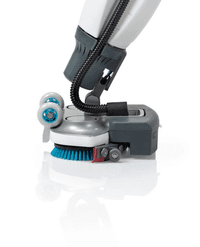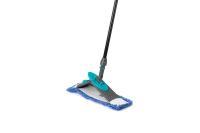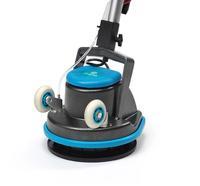You are reading: What's The Difference Between Cleaning, Sanitising, Disinfecting, And Sterilising?
18 February 2021
7min read time
Brooke Payne
What's The Difference Between Cleaning, Sanitising, Disinfecting, And Sterilising?
Share:

Key Insights
- Sanitising does't necessarily clean surfaces or remove staining and dirt, but rather reduces the number of bacteria on a surface to a safe level
- Disinfection aims to kill all germs on a surface with the use of a range of chemicals including alcohol, ammonia and chlorine
- Sterilisation destroys all microorganisms on a surface or in a fluid, preventing any disease from being transmitted
Many clients ask us: Is there a real difference between cleaning, sanitising, disinfecting and sterilising?
This is a question we hear a lot in the commercial cleaning industry. The short answer is yes: sanitising reduces bacteria, cleaning removes visible particles, disinfecting aims to kill all germs, and sterilising destroys all microorganisms and prevents disease.
Here's the longer version:
Cleaning
Cleaning is simply the removal of any visible particle (like dust, food, and oil) from any surface. The process of industrial cleaning usually involves the use of detergent, which is a surfactant designed to suspend oily and greasy particles in water, helping to remove them more easily from a surface.
The traditional commercial cleaning process doesn't necessarily kill germs and bacteria. It will however lower the number of germs and bacteria on a surface and therefore lower the risk of germs multiplying, and viruses or bacteria being spread.
Cleaning is a very important first step to effectively disinfect and sterilise as it removes any dirt and soil from a surface which could reduce a disinfectants ability to kill germs, viruses, and bacteria.

Sanitising
The process of sanitising is a step up from cleaning. It doesn't necessarily clean surfaces or remove staining and dirt, but rather reduces the number of bacteria on a surface to a safe level – it will remove up to 99.99% of bacteria in less than 30 seconds, reducing the risk of infection.
Some sanitisers are designed to be “no-rinse” which makes them effective for use in food preparation areas as the last step in a cleaning/sanitisation process for food prep surfaces. Another common application is sanitising children’s toys.
In order to sanitise a surface effectively, it MUST be cleaned properly first to remove any dirt or soiling.
Disinfecting
Unlike cleaning and sanitising, disinfection aims to kill all germs on a surface with the use of a range of chemicals including alcohol, ammonia and chlorine. Whether or not the disinfectant does in fact kill all the viruses on the surface will depend on a range of factors, including:
- Disinfectant shelf life and quality
- The suitability of the disinfectant for the application
- The dilution rate used
- The dwell time on the surface
Like sanitising, disinfection doesn't normally clean surfaces or remove staining and dirt, so to be effective a thorough cleaning process must been completed first.
Disinfection regimes are best performed regularly on areas that are touched frequently. Examples of these include light switches, door handles, keyboards, telephones, screens, remote controls, countertops, and more.
Read: Jani King shares why they trust the i-mop.

Sterilising
Sterilisation is typically used only in hospital and high grade medical or scientific environments. The sterilisation process is a level up from disinfection as it destroys all microorganisms on a surface or in a fluid, preventing any disease from being transmitted.
Sterilisation can be achieved with heat, high pressure, chemicals, irradiation, and filtration. Due to the higher process costs, it's not normally used in commercial cleaning and maintenance.
For more information on our range of i-team cleaning solutions click here !
Common Questions Answered
When is sterilizing necessary?
Answer: Sterilizing is used in environments where complete elimination of all forms of microbial life, including bacteria, viruses, spores, and fungi, is required. It is often essential in medical settings, laboratories, and some food preparation industries to ensure absolute hygiene.
References
CDC – Cleaning, Disinfecting, and Sanitizing
URL: https://www.cdc.gov/cleaning-and-sanitizing
EPA – Difference Between Cleaning, Sanitizing, and Disinfecting
URL: https://www.epa.gov/cleaning-vs-disinfecting
WHO – Sterilization and Disinfection Guidelines
URL: https://www.who.int/sterilization-guidelines
Products featured in this article
Media and Insights
Join the movement that's changing what clean means.
Be part of a cleaner world. Get a live demo at a time that suits you.
Book a Demo

